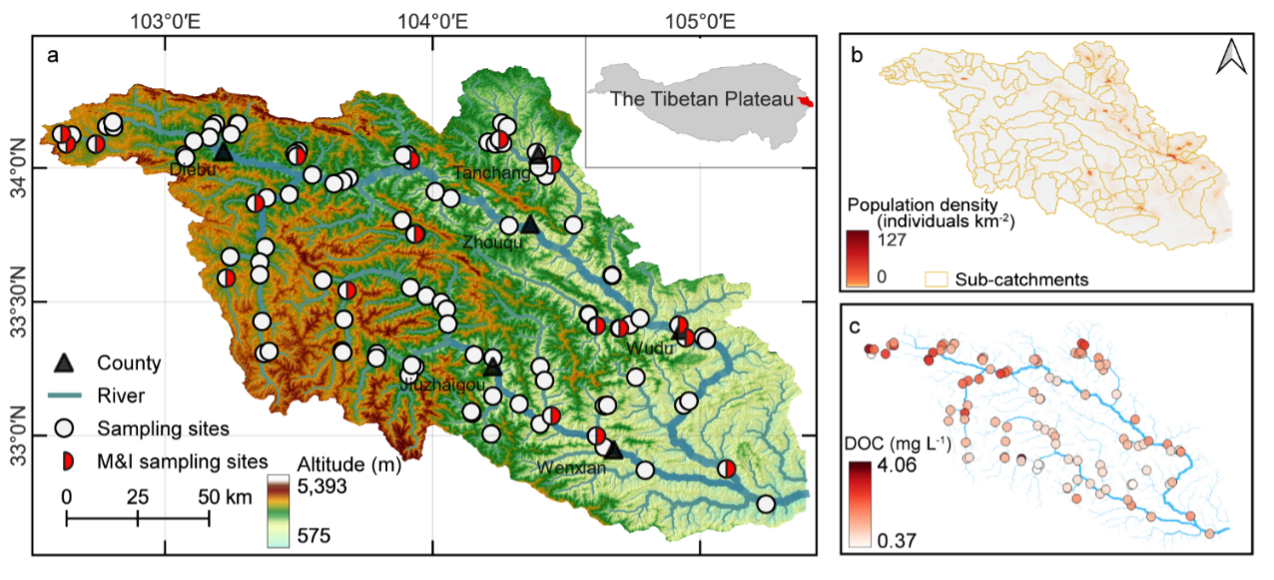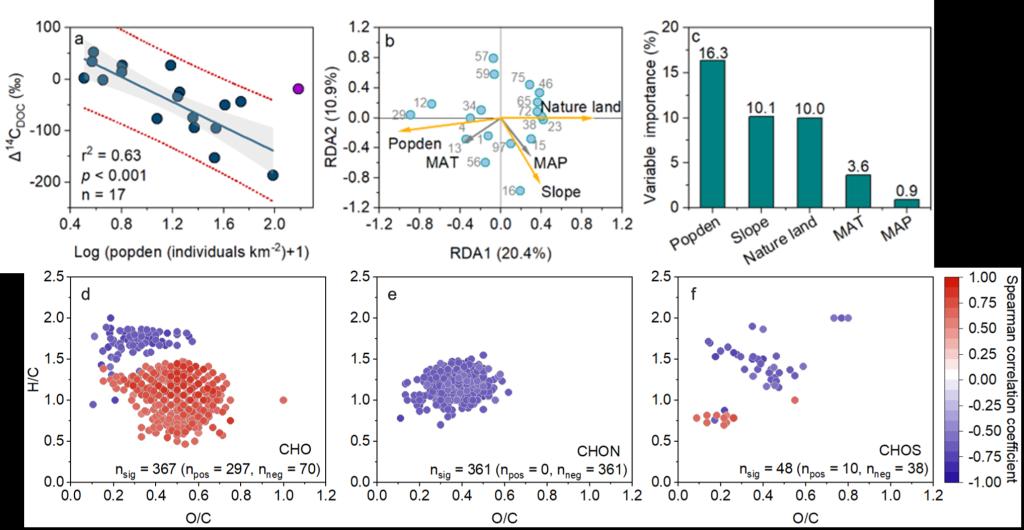The impacts of human activities on the riverine carbon (C) cycle have only recently been recognized, and even fewer studies have been reported on anthropogenic impacts on C cycling in rivers draining the vulnerable alpine areas. This study examined carbon isotopes (δ13CDOC and Δ14CDOC), fluorescence, and molecular compositions of riverine DOC in the Bailong River catchment, the eastern edge of the Tibetan Plateau to identify anthropogenic impacts on the C cycle. Human activities show limited impact on dissolved organic carbon (DOC) concentration, but significantly increased the age of DOC (from modern to ∼1600 yr B.P.) and changed the molecular compositions through agriculture and urbanization despite in the catchment with low population density. Agricultural activities indirectly increased the leaching of N-containing aged organic matter from deep soil to rivers. Urbanization released S-containing aged C from fossil products into rivers directly through wastewater. The aged DOC from agricultural activity and wastewater discharge was partly biolabile and/or photolabile. Consequently, the aged DOC which has been buried for centuries introduced into aquatic systems from human activities likely further participate in the global C cycle.

Figure 1. Locations of the study area and field sampling sites (a), the spatial distribution of population density (b), and DOC concentration (c).

Figure 2. Drivers of Δ14CDOC (a) and the molecular compositions of DOC (b, c); Van Krevelen diagrams of molecular formulas significantly correlated with Δ14CDOC (d-f).
This study highlights that riverine C is sensitive to anthropogenic disturbance on the Tibetan Plateau and also emphasizes that human activities reintroduce aged DOC into the modern C cycle, which would accelerate the geological C cycle.
Article information:
Hui Nai, Jun Zhong*, Yuanbi Yi, Manting Lai, Ding He, Thorsten Dittmar, Cong-Qiang Liu, Si-Liang Li and Sheng Xu*. Anthropogenic disturbance stimulates the export of dissolved organic carbon to rivers on the Tibetan Plateau. Environ. Sci. Technol. 2023, 57, 25, 9214–9223. DOI: 10.1021/acs.est.3c01593.